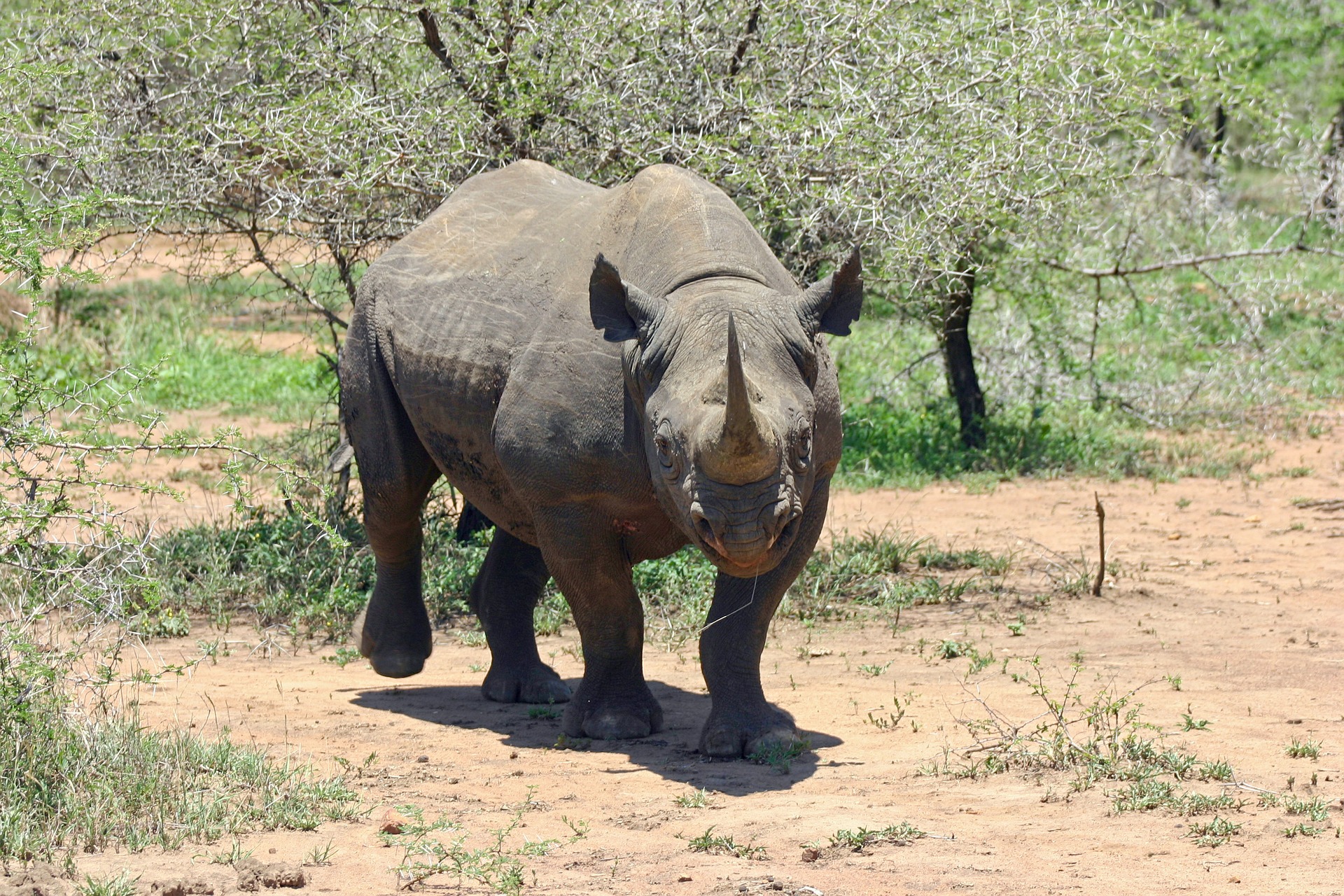
In Swahili, red-billed oxpeckers are called Askari wa kifaru, or “the rhino’s guard.” Now, a paper appearing April 9 in the journal Current Biology suggests that this indigenous name rings true: red-billed oxpeckers may act as a first line of defense against poachers by behaving like sentinels, sounding an alarm to potential danger. By tracking wild black rhinos, researchers found that those carrying oxpeckers were far better at sensing and avoiding humans than those without the hitchhiking bird.
While conservation efforts have rebounded the critically endangered black rhino’s numbers, poaching remains a major threat. “Although black rhinos have large, rapier-like horns and a thick hide, they are as blind as a bat. If the conditions are right, a hunter could walk within five meters of one, as long as they are downwind,” says Roan Plotz (@RoanPlotz), a lecturer and behavioral ecologist at Victoria University, Australia., who co-authored the paper with ecological scientist Wayne Linklater (@PolitEcol) of California State University – Sacramento. Oxpeckers, which are known to feed on the ticks and lesions found on the rhino’s body, may make up for the rhino’s poor eyesight by calling out if they detect an approaching human.
To study the role that oxpeckers might play, Plotz and his team recorded the number of oxpeckers on two groups of the rhinos they encountered. Rhinos tagged with radio transmitters–which allowed researchers to track them while evading detection from oxpeckers–carried the bird on their backs more than half the time. The untagged black rhinos they found, on the other hand, carried no oxpeckers most of the time–suggesting that other untagged rhinos that carried the birds might have avoided encountering the researchers altogether. “Using the differences we observed between oxpeckers on the tagged versus untagged rhinos, we estimated that between 40% and 50% of all possible black rhino encounters were thwarted by the presence of oxpeckers,” says Plotz.
Even when the researchers were able to locate the tagged rhinos, the oxpeckers’ alarm calls still appeared to play a role in predator defense. The field team ran a “human approach” experiment, where one researcher would walk towards the rhino from crosswind while a colleague recorded the rhino’s behavior. The field team recorded the number of oxpecker carried, the rhinos’ behavior upon approach, and the distance of the researcher when either the rhinos became vigilant or, if undetected, it became unsafe to get any closer.
“Our experiment found that rhinos without oxpeckers detected a human approaching only 23% of the time. Due to the bird’s alarm call, those with oxpeckers detected the approaching human in 100% of our trials and at an average distance of 61 meters–nearly four times further than when rhinos were alone. In fact, the more oxpeckers the rhino carried, the greater the distance at which a human was detected,” he says. He adds that these improved detection and distance estimates may even be conservative, because they don’t take into account the untagged rhinos carrying oxpeckers that the team could not detect.
When a rhino perceived the oxpecker alarm call, it nearly always re-oriented itself to face downwind–their sensory blind spot. “Rhinos cannot smell predators from downwind, making it their most vulnerable position. This is particularly true from humans, who primarily hunt game from that direction,” says Plotz.
Taken together, these results suggest that oxpeckers are effective companions that enable black rhinos to evade encounters with people and facilitate effective anti-predator strategies once found. Some scientists even hypothesize that oxpeckers evolved this adaptive behaviour as a way to protect their source of food: the rhinos.
“Rhinos have been hunted by humans for tens of thousands of years, but the species was driven to the brink of extinction over the last 150 years. One hypothesis is that oxpeckers have evolved this cooperative relationship with rhinos relatively recently to protect their food source from human overkill,” says Plotz.
Despite this closely tied relationship, oxpecker populations have significantly declined, even becoming locally extinct in some areas. As a result, most wild black rhino populations now live without oxpeckers in their environment. But based on the findings in this study, reintroducing the bird back into rhino populations may bolster conservation efforts. “While we do not know that reintroducing the birds would significantly reduce hunting impacts, we do know oxpeckers would help rhinos evade detection, which on its own is a great benefit,” says Plotz.
Plotz says that these findings, inspired by a Swahili name, also highlight the importance of local knowledge. “We too often dismiss the importance of indigenous people and their observations. While western science has been incredibly useful, there are many insights we can learn from indigenous communities.”


































